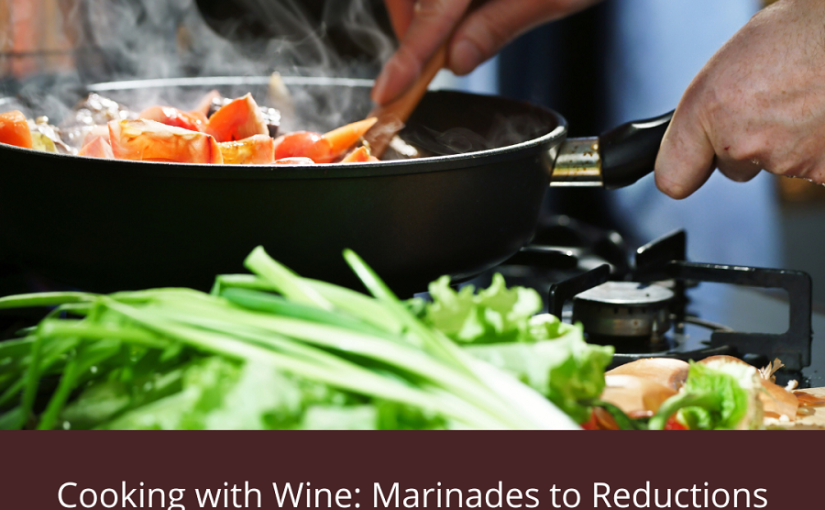Cooking with wine is a great way to add depth of flavor and complexity to your dishes. Whether you’re using it as a marinade, a braising liquid, or simply a deglazing agent, wine can take your cooking to the next level.
Wine Marinades
One popular way to use wine in cooking is as a marinade. A red wine marinade, for example, can be a great way to infuse flavor into meats such as beef, lamb, or pork. To make a simple red wine marinade, combine a cup of red wine, a quarter cup of olive oil, a few cloves of minced garlic, and some fresh herbs such as thyme or rosemary in a bowl. Mix everything together, then add your meat to the bowl and toss to coat. Cover the bowl with plastic wrap and refrigerate for at least an hour, or overnight for even more flavor.
Braising with Wine
Another way to use wine in cooking is as a braising liquid. Braising is a method of cooking that involves browning meat or vegetables in oil, then simmering them in a flavorful liquid for an extended period of time. Wine makes a great braising liquid because it adds a rich, complex flavor to the dish. To braise meat in wine, simply brown the meat in a pan with some oil, then add a cup or two of wine and enough chicken or beef broth to cover the meat. Bring the liquid to a simmer, then cover the pan and place it in the oven to cook.
Deglazing with Wine
Deglazing is a quick and easy way to use wine in cooking. When you sauté meat or vegetables, they release juices and bits of food that stick to the bottom of the pan. These bits, called fond, are packed with flavor. To deglaze a pan, you simply add a liquid such as wine to the pan, and use a wooden spoon to scrape the bottom of the pan and dissolve the fond. As the liquid comes to a simmer, it will reduce, thicken and intensify the flavors. Using wine in this way will give you a deep rich sauce that can be served over the cooked meat, vegetables or even rice.
Wine Reductions
Wine can also be used to make a reduction, a process that is similar to deglazing but with a more concentrated flavor. A wine reduction is made by simmering wine in a pan until it reduces by at least half. The result is a thick, syrupy liquid that has a concentrated wine flavor and can be used as a sauce or glaze.
Which wine to cook with?
When cooking with wine, it’s important to remember that the flavor of the wine will be concentrated as it cooks, so it’s best to use a wine that you would enjoy drinking. Avoid using wines that are “cooking wines”, as they often have a high salt content and can be of low quality.
It’s always better to use good quality wine in cooking. One cup of wine for the dish and one glass of wine for the cook!
In summary, cooking with wine is a delicious and easy way to add depth of flavor to your dishes. Whether you’re using it as a marinade, a braising liquid, or simply a deglazing agent, wine can help take your cooking to the next level.
When you have your list of favorite wines to “cook” with and would like to take it with you to enjoy out at a restaurant, download the CorkageFee app to find the nearest BYOW restaurant near you.
